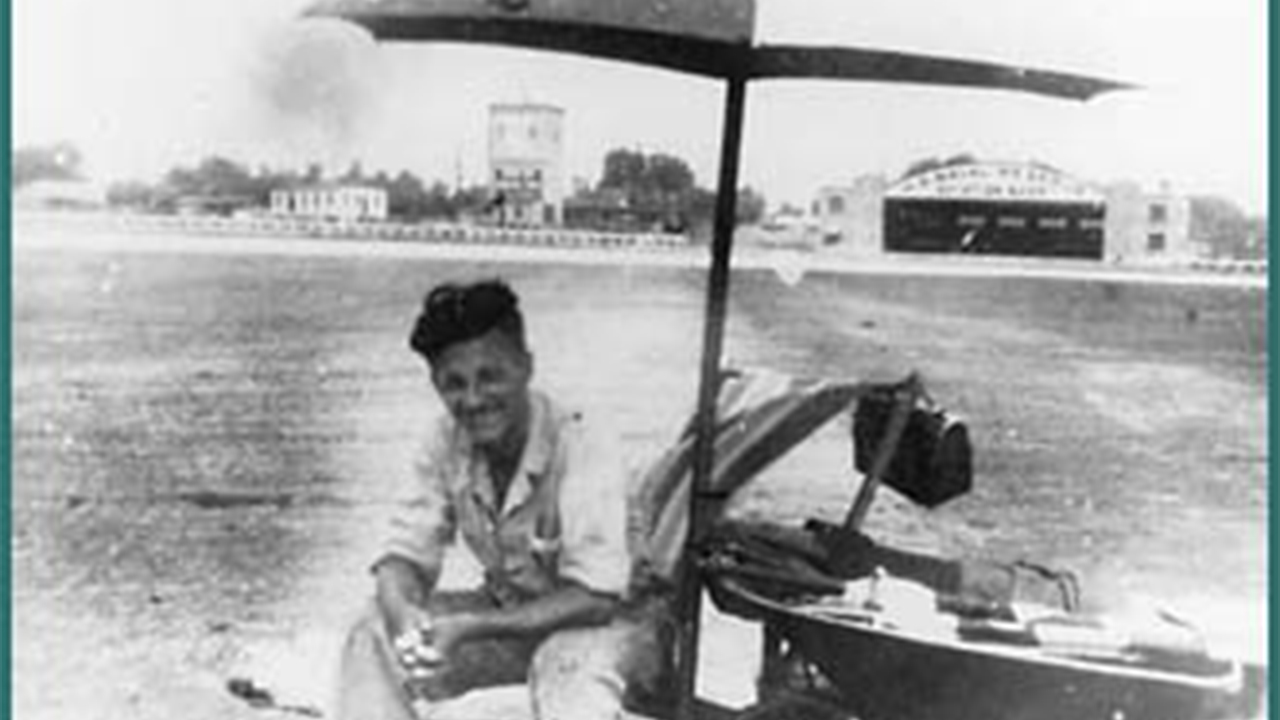
In the twenties, Archie League was spinning, diving, and doing loop-the-loops above the clouds, engine roaring, little plane shaking as he and the other barnstormers in his flying circus entertained folks across Missouri and Illinois. Necks grew stiff from watching, eyes squinted against the light, jaws dropped and air rushing in with every oooohhhh and whoa and oh my sweet Lord Jesus.
By 1929, though, League had crossed over to safety’s side and taken a job with St. Louis’s nine-year-old airport. Every day, he walked to the end of the Lambert Field runway with a wheelbarrow that held a deck chair, a beach umbrella for summer heat, a notepad, his lunch and, most important, two flags. The big red one meant STOP, and the checkered one meant GO, you can take off or land now.
He was, in other words, the first air traffic controller.
More than once, a pilot (accidentally? deliberately?) flew off course and knocked down his umbrella. Light guns soon replaced the flags but could be hard to see. Winters were bone cold out on that runway, even when League zipped himself into his padded flying suit. But by the early 1930s, he was cozy, ensconced in a little glass building atop a hangar, bent close and fiddling dials as the airport’s first radio controller.
Every day, he walked to the end of the Lambert Field runway with a wheelbarrow that held a deck chair, a beach umbrella for summer heat, a notepad, his lunch and, most important, two flags.
Short, slim, and precise, League was as possessed by safety as he had been by the wild freedom of stunt flying. He enrolled at Washington University and earned a degree in aeronautical engineering. In 1937, after so many planes filled the sky that the federal government took responsibility for keeping them safe, he joined the Bureau of Air Commerce (which would eventually become the FAA). He left only once: to fly in the Pacific theater during World War II, returning with the rank of colonel.
His days of simple flag-waving must have felt quaint. Air traffic control had (fast as the metal birds it choreographed) become complicated, amazing, stressful. Radar developed during the war allowed an incoming plane’s location to be displayed on cathode ray tubes so the pilot could be guided into a waiting position. Another display showed how the pilot should steer into the right approach angle, so the controller could literally talk the pilot down. That was important, because takeoff was no longer restricted to daylight and fair skies. Pilots could soar through black night or glide through a hailstorm using only their instrument panel—and the controller’s watchful guidance.
League was soon out of the tower, though, and behind a polished desk, where he was given steadily increasing responsibility for the jets, cargo planes, and light aircraft now criss-crossing the nation’s skies. As a regional director, he also oversaw the creation of underground bunkers that would allow the FAA to operate during an atomic attack. By 1965, he was directing air traffic services nationwide.
He had pioneered the chunk of aviation history that let us fly and live. With relentless focus, he had prevented rogue pilots from flying by the seat of their pants and kept millions of bodies safe in midair. He retired in 1973 and died thirteen years later in Annandale, Virginia, far from his birthplace in little Poplar Bluff, Missouri.
League was soon out of the tower, though, and behind a polished desk, where he was given steadily increasing responsibility for the jets, cargo planes, and light aircraft now criss-crossing the nation’s skies.
The National Air Traffic Controllers Association (motto: We guide you home) now presents the Archie League Medal of Safety to the professionals who calmly teach a passenger to land the plane after the pilot has a fatal heart attack, or bring a plane safely in after a collision with birds clogs and destroys its engine, or sort the chaos when a small plane wanders into a busy, controlled airspace without giving notice….
High in their tower, quiet behind the glass, they perform the most daring stunts of all.